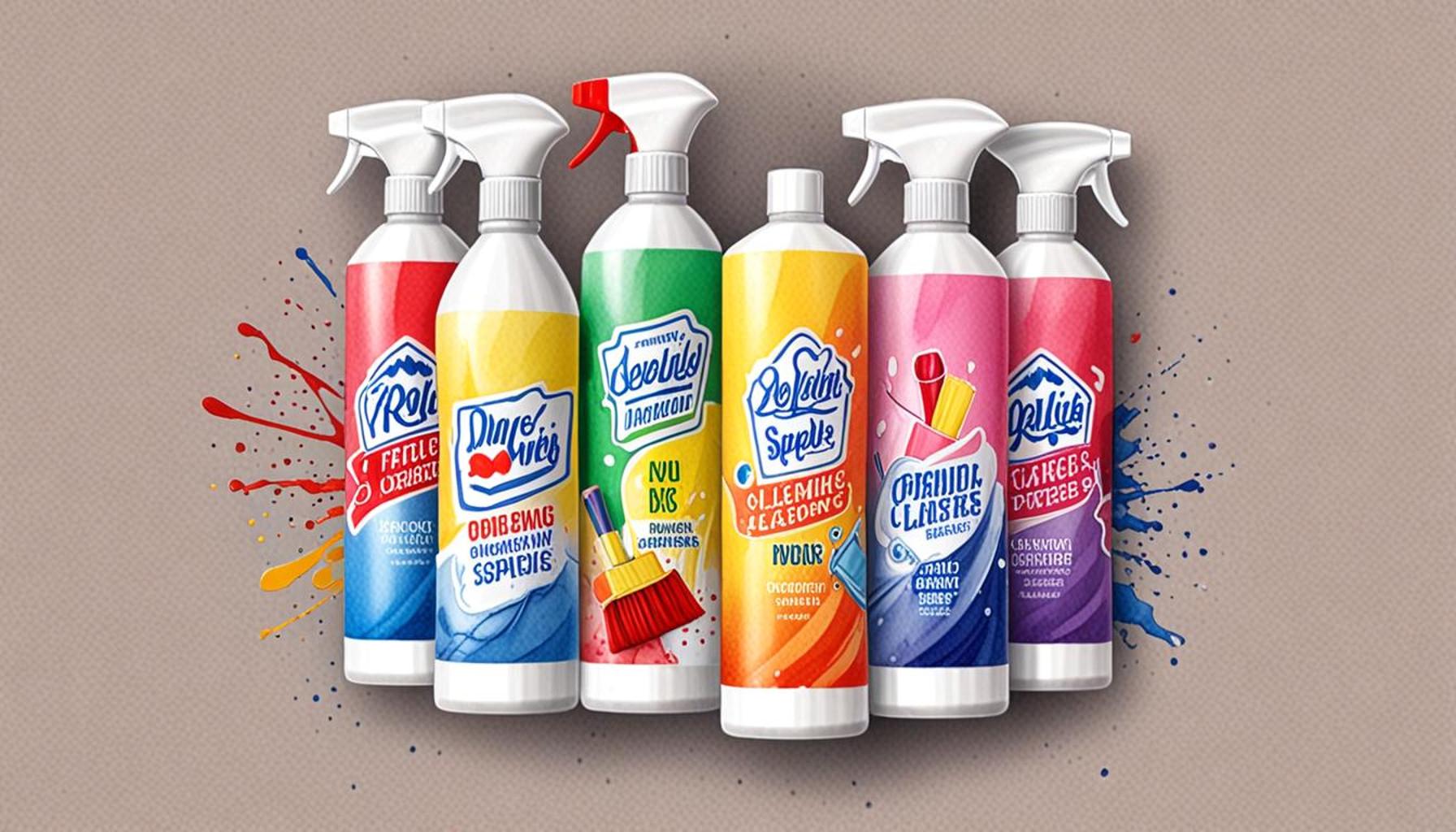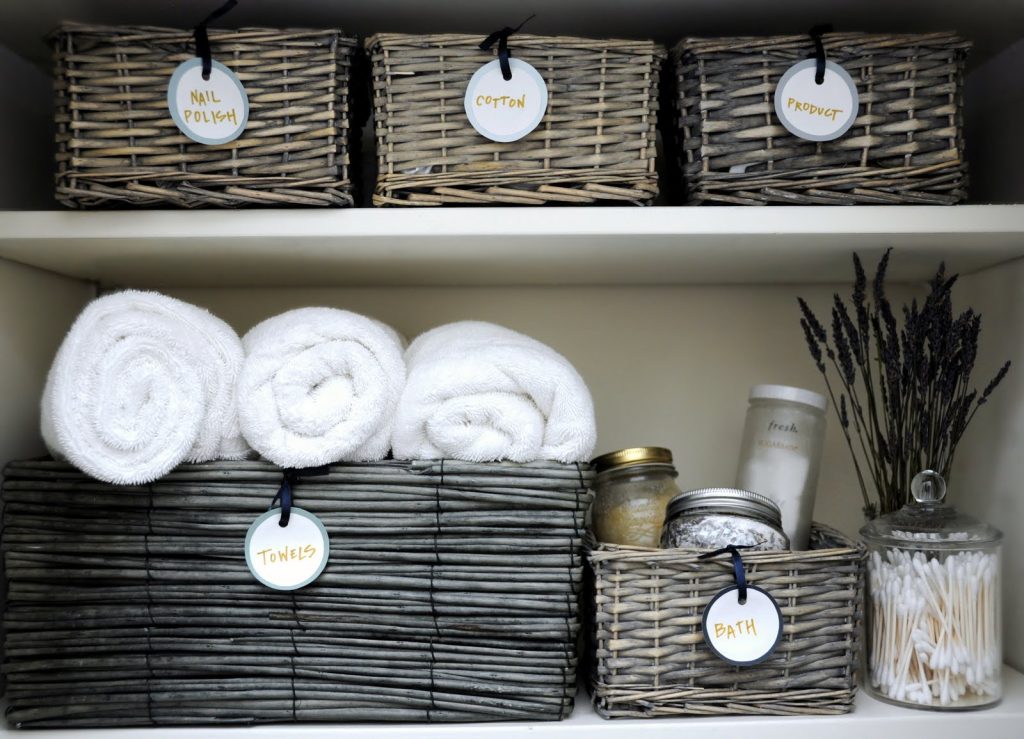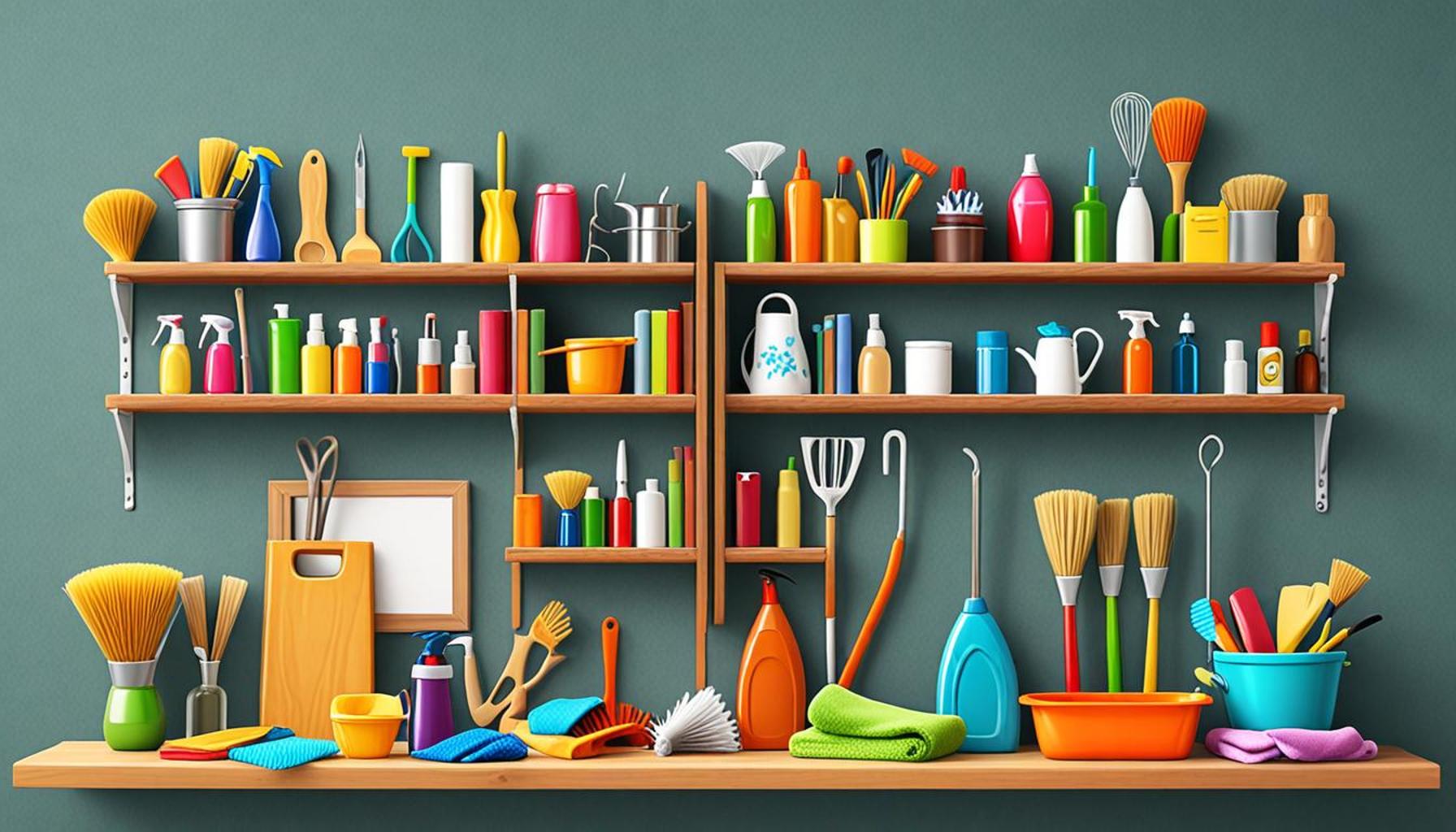The Role of Labels and Categories in Organizing Cleaning Materials: Maximizing Efficiency

The Importance of Categorizing and Labeling Cleaning Supplies
In the fast-paced environment of modern life, where multitasking is the norm and every minute counts, maintaining a clean and organized space has become essential. One effective strategy to enhance this process is the proper categorization and labeling of cleaning materials. This practice does not only streamline your cleaning routine but can also fundamentally alter how you approach household maintenance.
Time-Saving Benefits
Imagine walking into a storage closet and knowing exactly where to find your cleaning supplies without having to sift through a chaotic array of items. This time-saving advantage comes from a structured approach to organizing cleaning products. By categorizing supplies effectively, you can significantly reduce the time spent searching for items. Quick access to necessary tools means you can move through your cleaning checklist efficiently, leaving you with more time for leisure or other responsibilities.
Resource Management
Another compelling reason to prioritize organization is that it promotes effective use of resources. When items are clearly labeled and sorted, it helps prevent the unnecessary purchase of duplicate products. Going through your supplies regularly allows you to identify what you have, which can lead to smarter shopping decisions. For instance, if you notice you have multiple bottles of window cleaner, you can use one up before buying a new one, thus saving money.
Safety First
Safety is an often-overlooked aspect of cleaning organization. When cleaning agents are mixed incorrectly, they can produce harmful reactions. Clear labeling helps to prevent accidental mixing of incompatible chemicals, such as bleach and ammonia, which can create toxic gases. By keeping a well-categorized inventory, you ensure a safer environment for yourself and others, especially young children or pets who might inadvertently access these supplies.
Creating Clear Categories
To optimize your cleaning routine, it’s helpful to group your products into distinct categories. Consider organizing your supplies into the following groups:

- Household Cleaners – These can include all-purpose cleaners, glass cleaners, and surface wipes.
- Floor Care Products – This category could encompass floor cleaners, mops, and vacuum cleaners.
- Disinfectants and Sanitizers – Keep disinfecting wipes, sprays, and hand sanitizers grouped together for easy access.
- Specialty Supplies – This might include items like furniture polish, stainless steel cleaners, or products for specific surfaces.
By maintaining these classifications, you create a visual guide that aids in quickly identifying which product is best suited for each cleaning job. This organization not only enhances practical functionality but also boosts overall productivity. An organized cleaning arsenal minimizes stress, allowing you to tackle cleaning tasks with clarity and focus.
Conclusion
In exploring the benefits of categorizing and labeling cleaning supplies, it’s clear that this practice can transform your cleaning experience. Not only does it save time and money, but it also enhances safety and boosts efficiency. By investing a little time into organizing your cleaning supplies today, you set yourself up for a more seamless and effective cleaning routine tomorrow.
DON’T MISS: Click here for quick cleaning tips!
Streamlining Your Cleaning Process with Labeling
When it comes to cleaning, efficiency is key. The process can quickly become daunting, especially if supplies are scattered or poorly organized. This is where labeling your cleaning materials comes into play as a game-changing strategy. It transforms your cluttered collection into a well-ordered system, which can become critical for anyone from busy parents to professionals managing a tight schedule.
Improved Workflow
Investing time in labeling cleaning products can lead to a significantly improved workflow. Imagine being able to navigate your cleaning supplies with ease, locating exactly what you need in mere seconds. By implementing a labeling system, you create a unique identifier for each product, facilitating decision-making in real time. Whether it’s a versatile all-purpose cleaner or a specialized stain remover, clear labels enable you to transition from one task to the next without skipping a beat. The psychological benefit of visual clarity cannot be understated; an organized space enhances focus, allowing for greater productivity.
Customizable Storage Solutions
Along with systematic labeling, integrating customizable storage solutions is essential. While numerous effective storage solutions exist, it’s the combination of labeled bins and containers that maximizes efficiency. Here are some options to consider:
- Clear Bins – These allow you to quickly see the contents while maintaining organization.
- Magnetic Labels – Easily changeable and perfect for metal storage, they offer flexibility for evolving needs.
- Color-Coded Systems – Use different colors to signify categories such as cleaning frequency or type of use.
- Checklists – Attach a checklist to each bin to ensure you keep track of your inventory and know when to restock.
By investing in personalized storage solutions paired with labels, you can tailor your organization method to suit your cleaning habits, further enhancing efficiency. For instance, if you commonly clean kitchens and bathrooms on weekends, having all related cleaning supplies in one clearly labeled spot can significantly reduce prep time.
Encouraging Accountability
This streamlined approach doesn’t just make cleaning more efficient; it promotes a culture of accountability in maintaining cleanliness. In a household with multiple members, for example, assigning cleaning tasks becomes more straightforward when supplies are organized and labeled. Family members can quickly find the right tools and products needed for assigned chores, leading to fewer misunderstandings and wasted time. Transitioning this responsibility into a communal effort diminishes the burden on a single individual, fostering teamwork and collective responsibility.
As we can see, the organization and labeling of cleaning materials play a pivotal role in achieving maximum efficiency in cleaning routines. By systematizing this process, you unlock a level of simplicity and clarity that can revolutionize your approach to managing household chores.
The Importance of Labels and Categories in Cleaning Material Organization
In the realm of cleaning materials, effective organization is vital for maintaining efficiency and productivity. Utilizing labels and categories not only streamlines the cleaning process but also enhances accessibility to necessary items. This structured approach can significantly impact both residential and professional cleaning environments. Let’s explore how appropriate categorization can lead to improved workflows.
| Category | Benefits |
|---|---|
| Cleaning Chemicals | Know the properties and safety measures of each, ensuring the right use for optimal results. |
| Tools & Equipment | Quick access to tools enhances productivity, allowing for faster cleaning processes and higher quality outcomes. |
| Waste Management | Proper categorization fosters responsible disposal practices, which contributes to a cleaner environment. |
| Personal Protective Equipment (PPE) | Ensures safety compliance by having the necessary gear readily visible and available, preventing accidents. |
This table illustrates the fundamental categories pivotal in the organization of cleaning materials. Each category not only serves a clear function but also adds to the overall efficiency of cleaning operations. Understanding these categories better can lead to more informed decisions on how to approach cleaning tasks, ultimately maximizing productivity and cleanliness outcomes.
DISCOVER MORE: Click here for time-saving cleaning tips
Enhancing Identification and Safety with Labels
Another essential aspect of labeling cleaning materials lies in the area of identification and safety. With numerous cleaning products available on the market, many of which can be hazardous, having a clear labeling system becomes crucial not just for efficiency, but also for health. In households with children or pets, the necessity for visible, easily comprehensible labels cannot be overstated. This simple measure can serve as a first line of defense against accidents.
Emphasizing Safety Precautions
Labels should not only identify the contents of a container but also include important safety information. This could be anything from warning symbols for corrosive ingredients to instructions on proper usage. For instance, a container marked with a *hazard symbol* immediately alerts users to the risks associated with a product. Using contrasting colors for warning labels can further enhance visibility. When all members of a household are aware of the dangers that can arise from misusing or mishandling cleaning products, it encourages cautious behavior and minimizes accidents.
Consistency is Key
Maintaining consistency in your labeling approach enhances the overall effectiveness of your organization system. Utilizing a standard format—whether it be font size, typeface, or color scheme—across all labels helps foster a recognizable system. This consistency can be particularly advantageous for shared living spaces, where multiple individuals may engage with the supplies. For instance, using bold, large font for product names along with color coding cleaning agents versus disinfectants will help quicken identification and navigate products easily.
Moreover, implementing a standardized botanical system not only helps in pinpointing supplies quickly but also makes it easier to educate other household members or staff. In a workplace, for example, clear and consistent labeling empowers employees to understand each product’s purpose and safe usage, thereby mitigating risks associated with improper usage.
Leveraging Digital Tools for Inventory Management
As technology continues to evolve, incorporating digital solutions into your labeling system offers another layer of efficiency. Utilizing QR codes or apps associated with cleaning procedures can provide comprehensive information while saving physical space. This tech-savvy approach allows users to scan a code on a label which can link back to safety data sheets or instructional videos for effective usage.
Moreover, these digital tools can also assist in inventory management. By keeping an updated digital record of cleaning supplies, homeowners and facility managers can easily track what is available, what needs to be reordered, and rotation of supplies to prevent expiration. This method not only streamlines the cleaning process but also enhances operational efficiency—particularly in larger workplaces that rely heavily on meticulous cleaning protocols.
Creating a User-Friendly Experience
The ultimate goal of organizing cleaning materials through effective labeling and categorization is to create a user-friendly experience. When products are not just easy to find but also clearly communicated for their intended use, it fosters a positive attitude towards cleaning tasks. This simple yet profound shift can motivate individuals to engage more willingly in cleaning activities, transforming the chore into a more manageable, even satisfying endeavor.
In summary, labeling cleaning materials is not merely a structural aspect of organization; it incorporates elements of safety and ease of identification while adapting to modern technological solutions. As users become more aware of their surroundings, the confidence in effectively managing cleaning tasks also tends to increase, thus maximizing efficiency across the board.
DISCOVER: Click here for quick cleaning tips
Conclusion: Streamlining Cleaning Efforts Through Effective Labeling
In conclusion, the strategic use of labels and categories is paramount in the quest for an efficient cleaning experience. The integration of clear labeling not only simplifies the identification of cleaning materials but also significantly enhances safety for all users, particularly in environments with children and pets. By prioritizing visibility and accessibility, individuals can swiftly locate the correct products, reducing the time spent searching and increasing efficacy in cleaning tasks.
The emphasis on consistency in labeling creates a cohesive and user-friendly system that benefits everyone involved—whether it is a busy household or a large workplace. Additionally, leveraging modern technology through digital tools such as QR codes bridges the gap between traditional labeling and informative accessibility. This innovation not only safeguards against mishandling but also empowers users to manage their inventory efficiently, ensuring that supplies are stocked and ready when needed.
Ultimately, transforming the often-dreaded chore of cleaning into a more organized and approachable task hinges on the thoughtful application of labels and categories. As we adopt these practices, we not only enhance our cleaning efficiency but also cultivate a proactive mindset towards maintenance and care for our spaces. The evolution of our cleaning routines through effective organization is more than a trend; it is a vital step toward a safer and more inviting environment.


